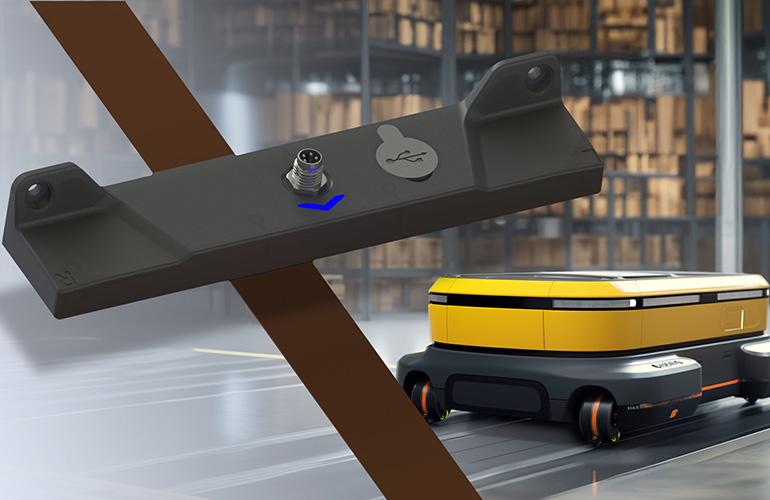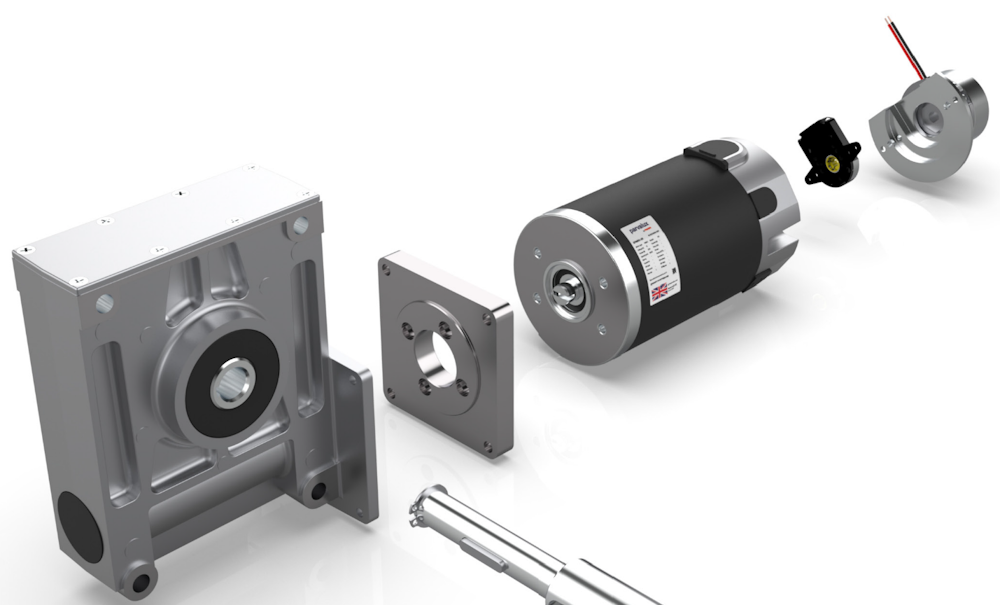
The Naviq sensor can sense angular orientation over a magnetic tape line. | Credit: Naviq
Naviq today unveiled the MTS160, a magnetic guide sensor for mobile robots. Magnetic guidance involves placing adhesive magnetic tape on the floor, which the robot senses and follows throughout the facility.
The new, patented sensor delivers angle measurement with 1-degree precision and position accuracy within 1 mm (0.039 in.). Naviq claimed that this dual functionality provides precision for both orientation and positioning, significantly improving the navigation capabilities of automated guided vehicles (AGVs).
For robots that follow a magnetic line around a facility, traditional magnetic guide sensors only provide one-dimensional position information, indicating how much the robot deviates from the center of the path. The common method for steering correction in robotics is proportional control, where the steering adjustment is proportional to the error detected between the robot’s measured position and the desired position.
Naviq promises faster curve following
The MTS160’s new angle detection allows the robot to assess the curvature of the track, said Naviq. This enables the robot to distinguish between minor trajectory adjustments needed on straight paths and more proactive steering for navigating curves.
This improved path-tracking precision allows robots to follow designated paths with enhanced accuracy and to navigate bends at higher speeds, said the Geneva, Switzerland-based company.
While magnet tape-following robots require that the facility be modified before the robot can start operations, modifying the path is as simple as moving the tape, a task requiring no special skills. The paths are similar to railroad tracks, and the vehicles stay on the path, Naviq noted.
The company added that the MT160 supports markers with reversed polarity to signal areas requiring speed adjustments, upcoming forks, and merges, and proximity to stop areas such as charging or loading/unloading stations. In addition, Naviq has created an algorithm for smooth direction changes at junctions.
The MT160 can function as the primary guidance sensor at less expense than vision systems or complement laser or vision navigation systems for precise, last-millimeter positioning, said the company.
MTS160 supports CAN bus interface
The MTS160 features an M8 four-pin watertight connector for power and signal transmission. It supports CAN bus and RS232 interfaces, ensuring compatibility with all PLC brands and microcomputers, said Naviq.
The system’s compact design, measuring only 165 x 35 x 25 mm (6.4 x 1.3 x 0.9 in.), makes it easy to incorporate into robots for very narrow aisles, personal mobility shuttles, and robotics camera dollies, it asserted.
Naviq said it designed its user interface for convenience, featuring RGB status LEDs for visual feedback on tape and marker detection. A Web-based utility requires no installation and connects the sensor to a smartphone or PC via USB port for easy configuration, testing, logging, and monitoring.
The utility also supports automatic firmware updates., and the internal circuitry can automatically run self-tests to ensure safe operation and reliable performance, said Naviq.
The MTS160 lists for $495 (€480) per unit.

Naviq describes magnetic guidance as the industry workhorse because of the ease of path modification. Source: Naviq

 3 months ago
38
3 months ago
38









 English (US) ·
English (US) ·